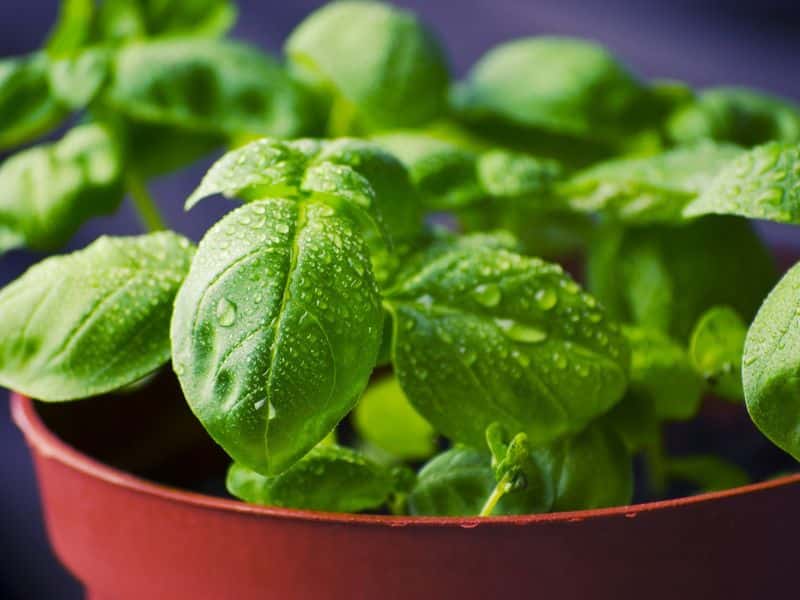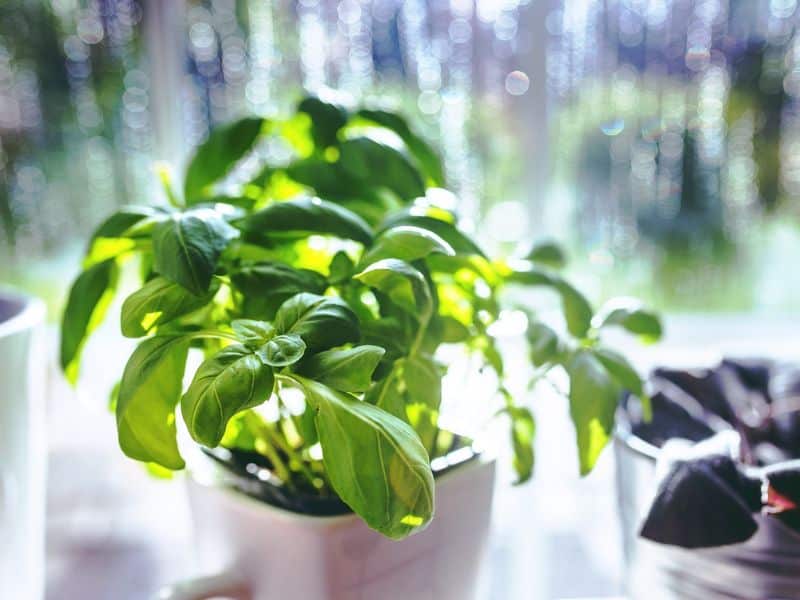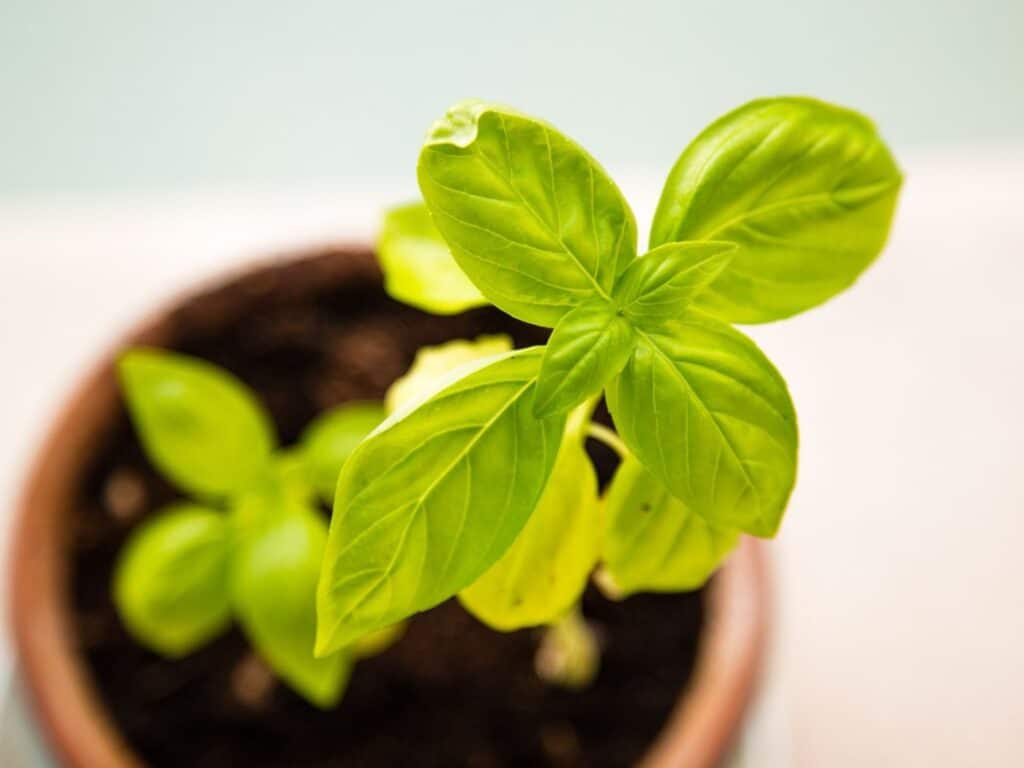Imagine nurturing your basil plants, anticipating the lush green leaves to add a fresh aroma to your dishes, only to find them turning an alarming shade of yellow. It’s a common plight that many gardeners face, yet it often leaves you wondering where things went wrong. Yellowing leaves on your basil can be a sign of distress, signaling that your plant needs immediate attention.
Don’t let this setback dishearten you. Understanding the underlying causes is the first step to reviving your basil plants. Whether it’s due to improper watering, nutrient deficiencies, or pest attacks, there’s always a solution at hand.
In this article, we’ll guide you through identifying the reasons behind the yellowing leaves and offer practical advice to restore your basil’s vibrant green color. Dive in to turn your gardening woes into a thriving, green success.
Understanding Why Basil Leaves Turn Yellow
Common Causes of Yellowing
Yellowing basil leaves can throw you for a loop, but fear not! This change often stems from a few solvable issues. Over-watering sits atop the list, leading to soggy soil conditions that basil finds less than ideal.
Conversely, under-watering causes the plant to dehydrate, reflected in those sad, yellow leaves. Light is another factor; too little sunshine leaves basil looking pale, while too much scorches its delicate leaves to a crisp.
Pests, such as aphids and spider mites, can also drain the life out of your plant, turning vibrant green leaves to a sickly yellow. Last but not least, temperature stress, particularly cold drafts, can result in the yellowing of basil leaves.
The Role of Nutrients in Plant Health
Nutrient balance is crucial for keeping basil happy and green. Nitrogen deficiency is a common culprit behind yellowing leaves. This vital nutrient fuels leaf growth, so when it’s in short supply, leaves lose their lush color.
But, it’s a tightrope walk; too much nitrogen and your plant may focus all its energy on leaves at the expense of flavor. Potassium and magnesium are also key players.
A lack of potassium leads to weak plants with yellow tips and edges, while magnesium shortage shows up as yellow leaves with green veins. The fix? A balanced fertilizer can replenish these essential nutrients and restore your basil’s vibrant hue.
Diagnosing the Issue with Your Basil Plant

Signs of Overwatering
Overwatering is like that guest at a party who doesn’t know when to leave, suffocating your overwatered basil’s roots. Your plant’s warning cries manifest as yellowing leaves, often accompanied by a wilting appearance despite the soil being wet.
If the ground feels more like a swamp than a well-drained pot, you’ve found the culprit. Cutting back on water lets your basil catch its breath, promoting a return to those lush, green vibes.
Identifying Nutrient Deficiencies
Think of nutrients as the secret sauce to your basil’s growth. Yellow leaves can signal a cry for help, a sign that your plant isn’t getting the right balance of vitamins from the soil. More precisely, a lack can involve key players like nitrogen, potassium, and magnesium.
Nitrogen deficiency usually turns young leaves pale, while a lack of potassium affects older leaves, causing yellowing with brown edges. Magnesium shortage will have the leaves sporting a yellow look between green veins. Adjusting your fertilization strategy can rebalance these nutritional needs, ensuring your basil thrives.
Pests and Diseases to Watch For
Pests are uninvited guests that crash the party, causing chaos amongst your basil plants. Yellowing can often be the first sign of aphids or spider mites setting up camp. These tiny intruders suck the life out of your plant, literally, by feeding on the sap.
Diseases, like fusarium wilt or downy mildew, also cast a shadow, manifesting through yellowing leaves often accompanied by other symptoms. Keeping a keen eye out for these pests and diseases allows for timely intervention, saving your basil from being a pest’s next meal.
Preventive Measures for Keeping Basil Healthy

In the journey to maintain a healthy basil plant, prevention plays a key role. It’s easier to prevent issues than to treat them. So, let’s dive into the specifics of how to keep your basil thriving.
Proper Watering Techniques
Irrigating your basil plants demands a balance. Overwatering can be just as harmful as underwatering. Aim to keep the soil moist, not waterlogged. A good rule of thumb is to check the soil’s moisture level before watering. If the top inch feels dry, it’s time to water. Also, consider using lukewarm water to avoid shocking the plant’s roots, which could lead to further stress and yellow leaves.
Optimizing Soil Nutrition
Basil plants are like teenage athletes; they’re hungry for nutrients but can be finicky about their meals. Start with well-draining soil rich in organic matter to encourage healthy root growth.
Applying a balanced, slow-release fertilizer every four to six weeks during the growing season can prevent nutrient deficiencies. Don’t forget to test your soil’s pH occasionally—it should be slightly acidic to neutral (around 6.0-7.0) for basil to absorb nutrients efficiently.
Creating an Ideal Growing Environment
Basil plants love the sun and require a minimum of six hours of direct sunlight daily. Placing them in a spot where they can bask in the morning light and enjoy some afternoon shade is ideal. Also, keep an eye on the temperature.
Basil thrives in warm conditions, so ensure the temperature stays between 70°F and 80°F. In cooler climates, consider growing basil indoors near a sunny window or under grow lights.
Remember, your basil doesn’t ask for much—just a bit of attention and the right conditions to flourish. By mastering these preventive measures, you’re setting the stage for lush, vibrant basil plants that are less likely to encounter those pesky yellow leaves.
Remedial Actions for Yellowing Basil Leaves
Caring for your basil plants when their leaves start turning yellow requires specific steps to bring them back to their lush, green state.
Adjusting Watering Habits
Over-watering or under-watering can both lead to yellow leaves. Basil plants enjoy a bit of a “Goldilocks” condition: not too wet, not too dry, but just right. Check the soil moisture by sticking your finger about an inch deep. If it feels dry, it’s time to water.
Likewise, ensure your basil isn’t sitting in waterlogged soil by improving drainage. Using pots with drainage holes and mixing sand or perlite into the soil can prevent water from pooling at the roots.
Addressing Nutrient Imbalances
Yellow leaves may well signal a nutrient imbalance. Basil loves a balanced diet, thriving on a mix of nutrients, particularly nitrogen. If your plant looks like it’s losing its vibrant color, a well-rounded, liquid fertilizer every 4-6 weeks during the growing season could perk it right up.
But, go easy on the fertilizer. Too much can harm your plant as much as too little. It’s like seasoning food; a little goes a long way.
Treating Pests and Diseases
Pests and diseases see your basil as a free lunch, and they can cause yellowing leaves as they feast. Keep an eye out for common culprits like aphids, spider mites, and fungal infections.
A gentle yet effective way to deal with pests is to rinse your basil plants under running water or use insecticidal soap. For fungal issues, neem oil acts as both a preventative and a cure by creating an environment that’s not very welcoming to fungi.
Each action you take, from watering adjustments to pest management, plays a crucial part in reviving your basil. Remember, seeing your plants flourish requires patience and a bit of TLC.
Frequently Asked Questions
Why are my basil plant’s leaves turning yellow?
Yellowing leaves on basil plants can result from improper watering, nutrient deficiencies, or pest issues. It’s important to evaluate your plant care routine to identify the cause.
How can I adjust my watering habits to help my basil plant?
Ensure your basil plant receives a consistent amount of water, allowing the soil to slightly dry out between waterings. Over-watering and under-watering can both cause stress and yellowing of leaves.
What nutrients are essential for a healthy basil plant?
Basil plants thrive with a balanced diet, often needing nitrogen, phosphorus, and potassium. A balanced liquid fertilizer can help address these nutrient imbalances and keep your plant healthy.
How can I treat pests on my basil plants?
For pests like aphids, natural remedies such as neem oil or a simple soap and water spray can be effective. Always test a small area first and follow the product’s instructions.
Is it difficult to revive a basil plant with yellow leaves?
With patience and the right care, including proper watering, addressing nutrient issues, and managing pests, it is possible to revive basil plants with yellow leaves. Consistency in plant care is key.
Up next:







